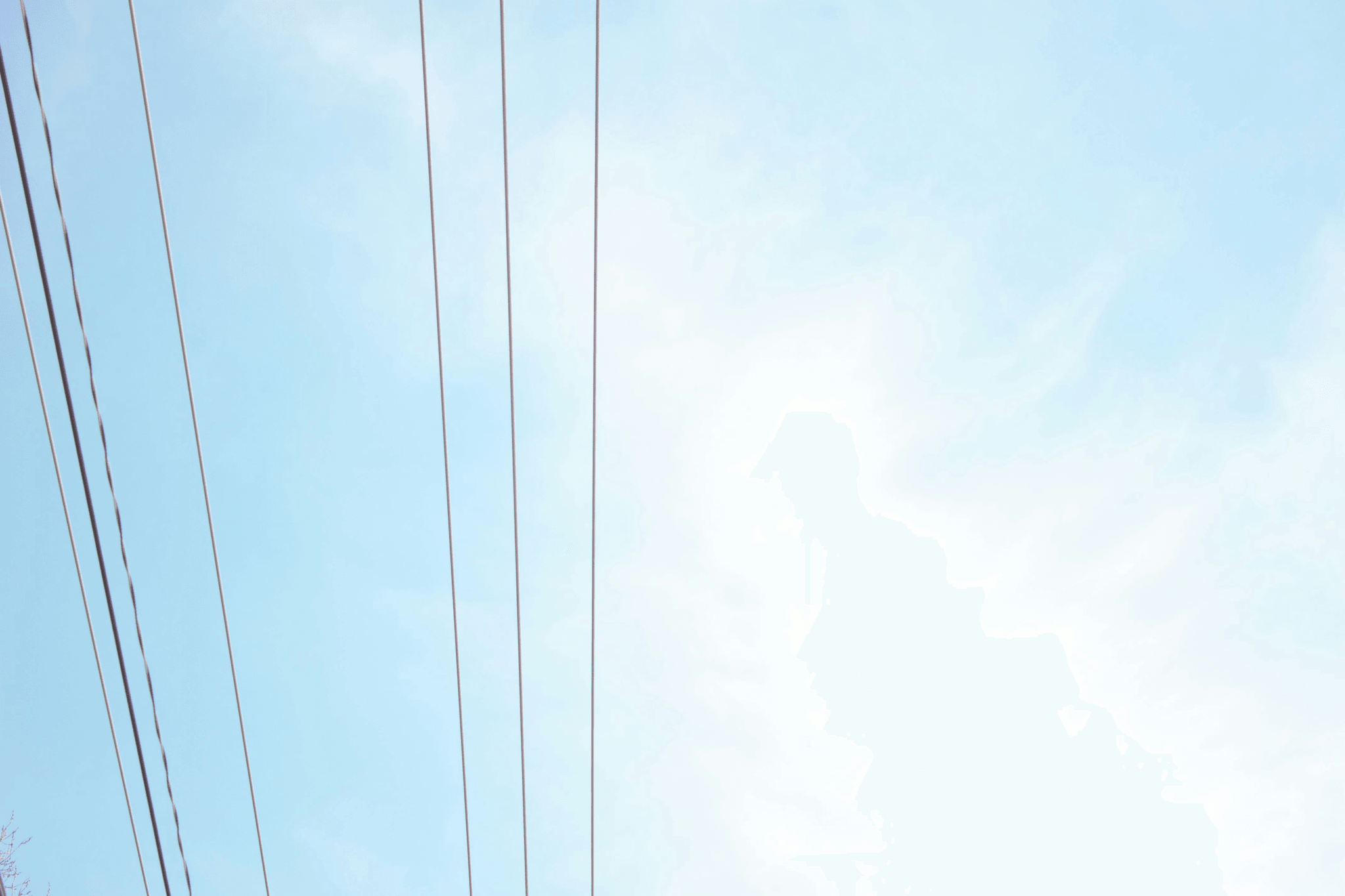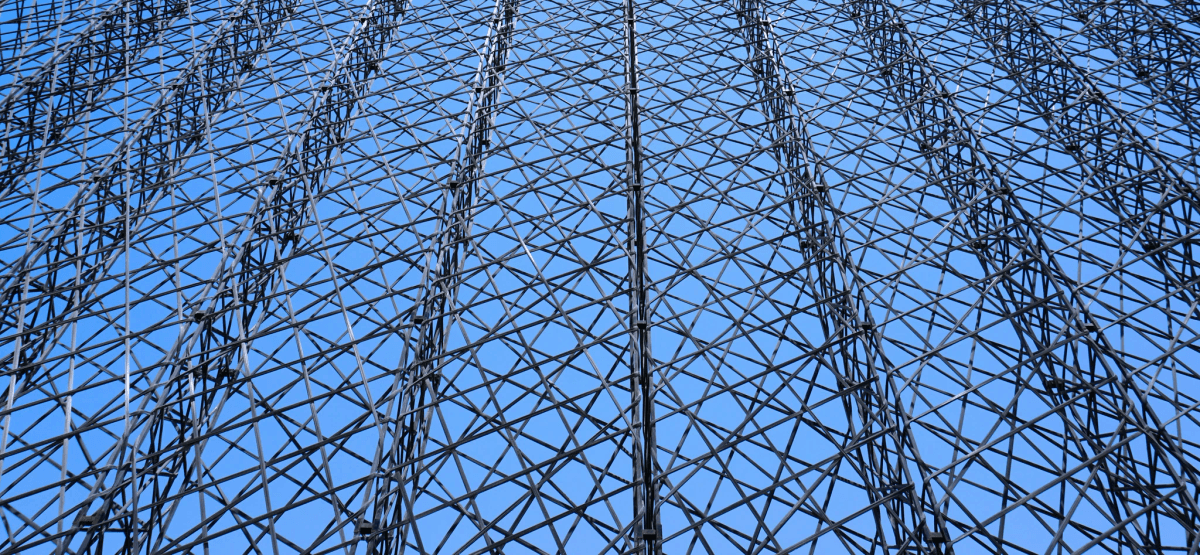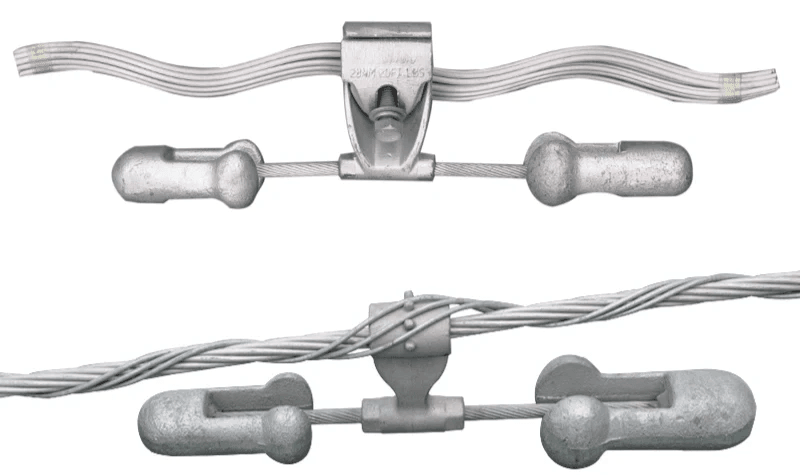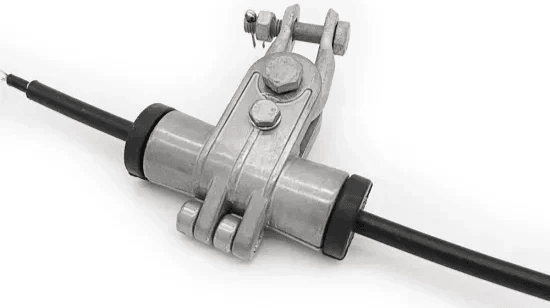Introduction
In the world of electrical engineering, overhead power transmission lines are the unsung heroes that keep our lights on and devices running. These lines, often seen strung between towering pylons, are essential for delivering electricity across vast distances. But what exactly makes these systems work? Enter the ball eye—a crucial component that plays a significant role in ensuring safety and functionality.
Understanding Overhead Power Transmission Lines
Overhead power transmission lines are designed to transport high-voltage electricity from generation sources to substations and ultimately to consumers. The principle of transmission line operation revolves around carrying electricity efficiently while minimizing energy loss due to resistance and environmental factors. One common question arises: do transmission lines carry electricity? The answer is a resounding yes, as they facilitate the flow of electrical energy through their conductors.
The Role of Ball Eyes in Transmission Systems
So, what are the balls on transmission lines? These spherical fixtures, known as ball eyes or oval eye balls, serve multiple purposes in the transmission system. Primarily, they enhance safety by providing a secure attachment point for conductors while also helping to reduce mechanical stress on cables during wind or ice loading conditions.
The Science Behind Electric Transmission
The science behind electric transmission involves understanding how electric fields interact with various components within the system. What is the electric field in the transmission line? It refers to the region around charged conductors where electrical forces can be felt—essentially dictating how energy flows through these lines. By comprehending this complex interplay, engineers can design more efficient systems that ensure reliable electricity delivery while maintaining safety standards.
The Function of Ball Eyes

These seemingly simple components are not just decorative; they serve essential functions that enhance the reliability and safety of electric transmission systems. Understanding the function of ball eyes, or Oval Eye Balls as they're sometimes called, is key to grasping how transmission lines operate.
What are Ball Eyes?
Ball eyes, or Oval Eye Balls, are spherical fittings attached to transmission lines that serve multiple purposes. They help secure and support conductors while allowing for some flexibility in their positioning. So, what are the balls on transmission lines? Essentially, they act as connection points where cables can be anchored without compromising their integrity.
These components come in various sizes and materials to suit different types of transmission lines. Their design ensures that they can withstand environmental factors like wind and ice accumulation while maintaining electrical conductivity. Understanding what is the principle of transmission line functionality reveals that ball eyes contribute significantly to keeping the conductors stable and functional.
How Ball Eyes Enhance Safety
Safety is paramount when dealing with high-voltage electricity, and this is where ball eyes shine—quite literally! By providing a secure anchoring point for conductors, these fittings help prevent sagging or detachment under stress conditions like strong winds or heavy ice loads. This stability reduces the risk of electrical faults caused by physical failures in the system.
Moreover, ball eyes also play a role in minimizing electrical hazards associated with overhead power lines. They ensure that conductors maintain safe distances from each other and from other structures by keeping them properly aligned. The question Do transmission lines carry electricity? highlights a vital fact: when they do so safely thanks to features like ball eyes, we can trust our energy supply even more.
Applications of Ball Eyes in Transmission Lines
The applications of ball eyes extend beyond mere aesthetics; they are integral parts of modern electric infrastructure. These fittings are used extensively across various types of overhead power systems—from distribution networks to high-voltage long-distance transmissions—ensuring reliable service across diverse environments.
In addition to supporting conductor alignment, ball eyes also facilitate easier maintenance access for utility workers who must inspect or repair these vital systems regularly. Their design allows for quick attachment and detachment during maintenance tasks without risking damage to the surrounding infrastructure or causing outages unnecessarily. Understanding what is the electric field in the transmission line helps us appreciate how critical it is for every component—including ball eyes—to function optimally within these powerful systems.
Transmission Line Basics

Understanding the fundamentals of transmission lines is crucial for grasping how electricity travels over long distances. One key component often seen along these lines is the ball eye, specifically designed to enhance safety and functionality. In this section, we will explore what these balls are, their principles, and their role in carrying electricity.
What are the Balls on Transmission Lines?
The balls on transmission lines, commonly referred to as ball eyes or oval eye balls, serve multiple purposes in electrical infrastructure. These spherical components are typically made from durable materials such as aluminum or galvanized steel, allowing them to withstand harsh weather conditions and physical stresses. Their primary function is to provide a secure attachment point for insulators and other hardware while minimizing electrical hazards.
Ball eyes also play a pivotal role in ensuring that transmission lines remain stable and properly aligned during operation. By acting as a buffer against wind and other environmental factors, these components help maintain the integrity of the entire system. Understanding what these balls on transmission lines do gives us insight into their critical importance in electrical engineering.
The Principle of Transmission Lines
What is the principle of transmission line? At its core, a transmission line operates by transferring electrical energy from one location to another through conductive materials like wires or cables. This process relies heavily on electromagnetic principles that govern how electricity interacts with various materials along its path.
The design of transmission lines incorporates several factors including voltage levels, distance between towers, and environmental conditions to optimize efficiency. When considering what is the electric field in the transmission line contextually relates to how energy flows through these systems; it’s this electric field that facilitates the movement of electrons along conductors while ensuring minimal energy loss during transit.
In essence, understanding the principle behind transmission lines helps us appreciate how they manage high-voltage electricity effectively over vast distances while using components like ball eyes strategically positioned throughout their structure.
Do Transmission Lines Carry Electricity?
Yes! Do transmission lines carry electricity? Absolutely! These vital pathways are engineered specifically for transmitting high-voltage power generated at plants to homes and businesses across vast regions. The design ensures that electricity can be transported efficiently without significant losses due to resistance or environmental interference.
Transmission lines utilize an intricate balance of electrical engineering principles—like those involving ball eyes—to maintain structural integrity and safety throughout their operation. It's fascinating how something as simple as an oval eye ball can contribute significantly by providing support for insulators and reducing risks associated with high-voltage circuits.
In summary, understanding whether do transmission lines carry electricity leads us back to recognizing their essential role in our modern power grid—a network that relies upon effective design elements such as ball eyes for safe energy distribution.
The Design of Oval Eye Balls

When it comes to the design of ball eyes, or more specifically, oval eye balls, several factors come into play. These components are not just decorative; they serve critical functions in overhead power transmission lines. Understanding the materials and designs used for these oval eye balls can help elucidate their role in ensuring efficient and safe electric transmission.
Materials Used for Oval Eye Balls
Oval eye balls are typically crafted from durable materials that can withstand harsh environmental conditions. Common choices include aluminum and galvanized steel, both known for their strength and resistance to corrosion. These materials ensure that the ball eyes maintain structural integrity while supporting the weight of conductors in a transmission line system.
The choice of material is vital because it directly impacts the longevity and reliability of the ball eyes. Given that these components often endure extreme weather conditions, selecting high-quality materials is essential to prevent premature failure. Thus, understanding what are the balls on transmission lines made from informs us about their capability to carry electricity safely.
Why Choose Aluminum or Galvanized Steel?
Aluminum is lightweight yet incredibly strong, making it an ideal choice for ball eyes that need to support electrical conductors without adding excessive weight to the system. On the other hand, galvanized steel offers superior durability under conditions where rust might be a concern—an important factor when considering how long these components will last in outdoor environments.
Choosing between aluminum and galvanized steel often depends on specific application requirements; however, both options provide excellent performance characteristics for overhead power systems. Additionally, using these materials helps ensure that what is the principle of transmission line integrity remains intact over time despite potential wear and tear from environmental factors. Ultimately, selecting quality materials enhances safety while ensuring reliable electricity flow through transmission lines.
Spark Fittings: Experts in Custom Designs
When it comes to custom designs for oval eye balls, Spark Fittings stands out as a leader in innovation within this niche market. They specialize in creating tailored solutions that meet specific demands while maintaining compliance with safety standards across different regions. Their expertise ensures that every ball eye is designed with precision—critical when considering how do transmission lines carry electricity effectively.
Spark Fittings understands that no two installations are alike; hence their approach involves collaborating closely with clients to deliver customized products suited for unique applications. This level of attention ensures optimal performance by addressing any potential issues related to what is the electric field in the transmission line surrounding these components as well as their overall functionality within a power grid system.
In summary, whether you're looking at standard options or custom designs from industry leaders like Spark Fittings, understanding how oval eye balls contribute to overhead power systems provides valuable insight into their importance within electrical engineering practices today.
The Electric Field in Transmission Lines

When we think about transmission lines, we often picture the high-voltage wires strung between tall towers, but there's a lot more going on behind the scenes. One critical aspect is the electric field generated around these lines, which plays a significant role in how electricity is transmitted. Understanding what the electric field in the transmission line entails helps us appreciate its impact on components like ball eyes and overall system safety.
What is the Electric Field in the Transmission Line?
The electric field in a transmission line refers to the area around the conductors where electric forces can be felt by charged particles. Essentially, it's a region of influence created by voltage differences along the line, which can extend outward into surrounding space. This electric field is crucial for understanding how do transmission lines carry electricity efficiently while ensuring minimal interference with nearby objects or structures.
Impact of Electric Fields on Ball Eyes
Ball eyes, particularly oval eye balls used in transmission systems, are designed to withstand various environmental factors, including electric fields. These fields can induce currents that may affect their integrity and performance if not properly managed. By understanding how these fields interact with ball eyes, engineers can enhance their design and placement to ensure they remain effective under electrical stress.
Safety Measures for Electric Fields
To mitigate risks associated with electric fields near transmission lines, several safety measures are implemented during installation and maintenance processes. Proper grounding techniques help dissipate any induced currents that could otherwise damage components like ball eyes or pose safety hazards to personnel working nearby. Furthermore, regular inspections of both the ball eye and surrounding areas ensure that any potential issues related to what are the balls on transmission lines are addressed promptly before they escalate into serious problems.
Installation and Maintenance

These components, often referred to as Oval Eye Balls, play a significant role in the overall safety and efficacy of power transmission systems. Understanding best practices for their installation, common issues that may arise during maintenance, and the vital role of specialized manufacturers like Spark Fittings can help keep these systems running smoothly.
Best Practices for Installing Ball Eyes
Installing ball eyes requires careful attention to detail to ensure they function as intended. The first step is selecting the right type of ball eye based on the specific requirements of your transmission line; this involves considering factors such as load capacity and environmental conditions. Additionally, when installing these components, it's essential to follow manufacturer guidelines closely—this ensures that what are the balls on transmission lines are positioned correctly for optimal performance.
Another best practice is to conduct a thorough inspection before installation; this includes checking for any signs of wear or damage in both the ball eye itself and its mounting points. Proper alignment is also key—misalignment can lead to increased stress on both the ball eye and adjacent components, potentially compromising their integrity over time. Lastly, securing all fittings tightly but not overtightening will prevent future issues related to vibration or movement within the system.
Common Maintenance Issues
Despite robust design features, ball eyes can encounter several common maintenance issues that may affect their performance over time. One frequent problem is corrosion, especially in environments with high humidity or exposure to chemicals; this can weaken materials like aluminum or galvanized steel used in Oval Eye Balls. Regular inspections should include checks for rust or other forms of degradation that could compromise safety.
Another concern is wear from mechanical stress; constant tension from electrical loads can lead to fatigue in materials over time. It's important to monitor any signs of cracking or deformation during routine maintenance checks—catching these early can save costly repairs later on. Lastly, improper installation techniques might lead to premature failure; therefore, adhering strictly to installation best practices becomes even more critical when addressing ongoing maintenance concerns.
The Role of Spark Fittings in Maintenance
Spark Fittings plays an integral role in maintaining reliable overhead power transmission systems through their expertise in designing custom solutions tailored specifically for unique challenges associated with ball eyes and other components. Their specialized knowledge allows them to address specific needs related to what is the principle of transmission line operation while ensuring compliance with industry standards.
In addition to providing high-quality products like Oval Eye Balls designed for durability under various conditions, Spark Fittings offers invaluable support during troubleshooting efforts as well as regular maintenance services tailored towards extending component life cycles effectively. Their commitment doesn’t just stop at selling parts—they actively contribute toward enhancing overall system reliability through ongoing client education about what do transmission lines carry electricity efficiently while minimizing risks associated with electric fields present within those systems.
Furthermore, Spark Fittings provides training resources aimed at equipping technicians with skills necessary for identifying potential issues early on—an essential aspect given that understanding what is the electric field in a transmission line directly influences how well these installations perform over time.
Conclusion
In summary, the importance of ball eyes in overhead power transmission lines cannot be overstated. These components, often referred to as Oval Eye Balls, play a crucial role in enhancing safety and functionality within transmission systems. Understanding what these balls on transmission lines do and how they operate is essential for anyone involved in electrical engineering or infrastructure development.
Key Takeaways on Ball Eyes
Ball eyes are critical components that enhance the reliability of transmission lines while ensuring safety for both workers and the public. They not only support the physical structure of cables but also help manage the electric field in the transmission line, minimizing risks associated with high-voltage electricity. By understanding what is the principle of transmission line design and function, stakeholders can better appreciate how ball eyes contribute to efficient energy distribution.
Future Trends in Transmission Line Design
The future of transmission line design is leaning towards smarter integration of materials like aluminum and galvanized steel for constructing more durable Oval Eye Balls. Innovations will likely focus on improving safety features while reducing maintenance needs through advanced materials that withstand environmental stressors better than ever before. As we ponder do transmission lines carry electricity effectively into increasingly urbanized areas, advancements in technology will ensure that these systems remain reliable and efficient.
The Importance of Reliable Transmission Systems
Reliable transmission systems are vital for modern society’s infrastructure; they ensure that electricity flows seamlessly from generation points to end-users without significant losses or interruptions. Understanding what is the electric field in the transmission line helps engineers design systems that safeguard against potential hazards while maintaining efficiency. Ultimately, investing time and resources into optimizing elements like ball eyes ensures our electrical grids remain robust as we transition into a more electrified future.

